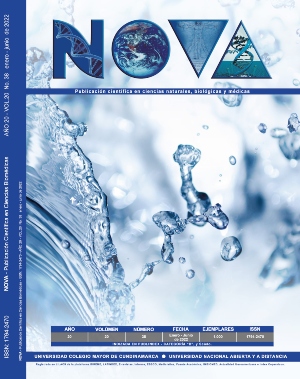Copyright (c) 2022 NOVA Biomedical Sciences Journal

This work is licensed under a Creative Commons Attribution-NonCommercial-NoDerivatives 4.0 International License.
NOVA por http://www.unicolmayor.edu.co/publicaciones/index.php/nova se distribuye bajo una licencia Reconocimiento No Comercial- Compartir igual
Así mismo, los autores mantienen sus derechos de propiedad intelectual sobre los artículos,
Declaración de privacidad.
Los nombres y las direcciones de correo electrónico introducidos en esta revista se usarán exclusivamente para los fines establecidos en ella y no se proporcionarán a terceros o para su uso con otros fines.
Physiopathology and clinical alterations of diabetes mellitus 2
Type 2 diabetes mellitus is a debilitating, degenerative and multifaceted clinical condition with a high prevalence worldwide. Given the complexity of its pathophysiology and the various therapeutic options that exist, this disease presents a challenge for the general practitioner, it is imperative to understand this pathology to improve its resolution in primary care. After an exhaustive bibliographic search of 103 studies published up to 2010, the most important aspects of both the physiology, pathophysiology, complications, and therapeutics of this pathology were identified. Insulin resistance (IR) is a central metabolic condition in the etiopathogenesis of this pathology. Classically it is possible to recognize both the loss of the peripheral action of insulin by the different tissues as well as defects in the secretion of insulin that leads to constant hyperglycemic states associated with both acute and chronic complications characterized by causing dysfunction and failure in different organs. It is generally known that an important part of the results in the management of this pathology are achieved with changes in lifestyle that range from modifications in diet to changes in the pattern of physical activity with loss of body weight. However, there also is a wide range of pharmacological therapies aimed at controlling hyperglycemic states in the event of the failure of non-pharmacological therapy. Within this same context, there are several therapeutic targets and objectives in the treatment of type 2 diabetics, however, they all converge in the metabolic control of hyperglycemic states and the prevention of their complications.









